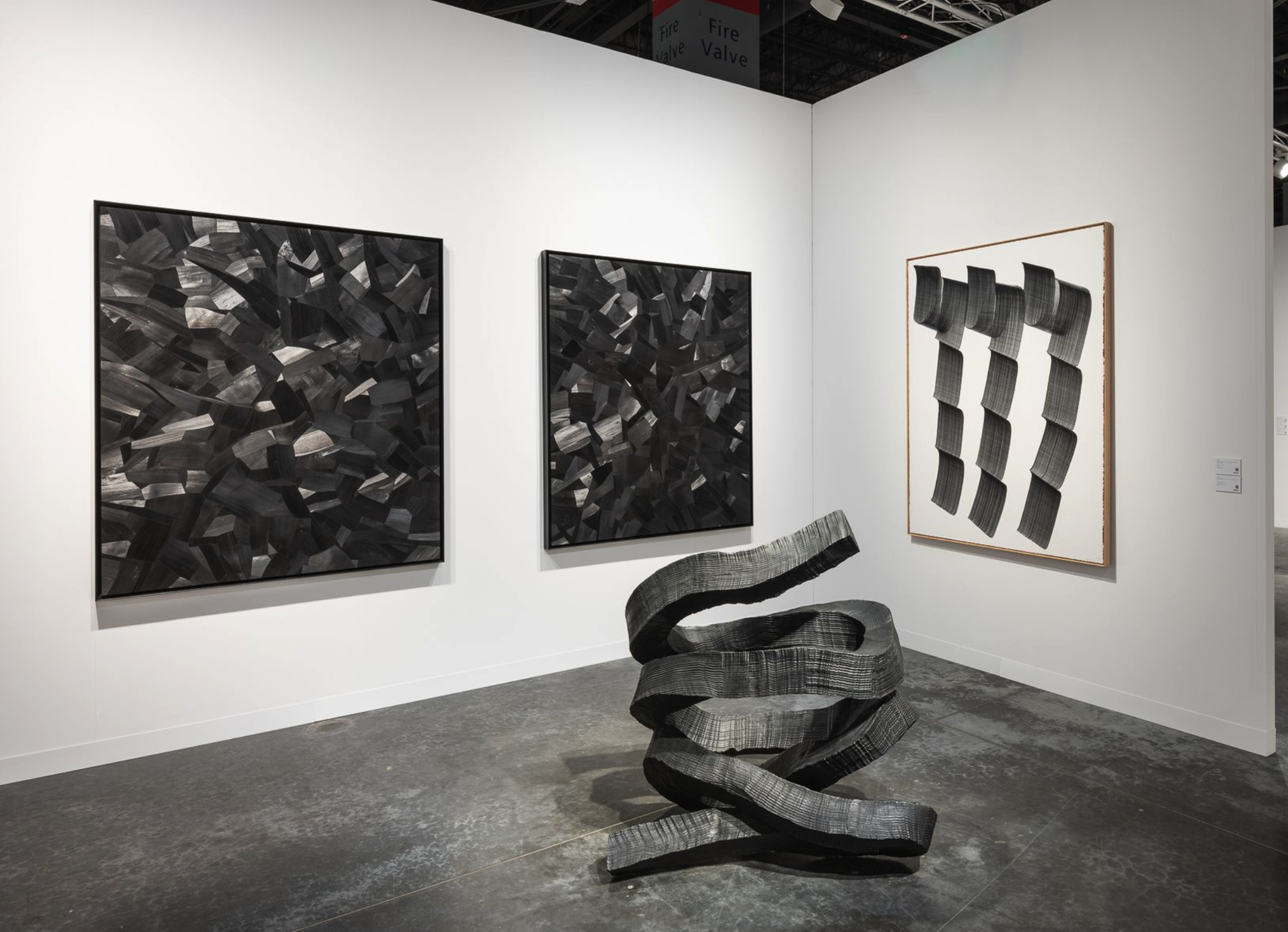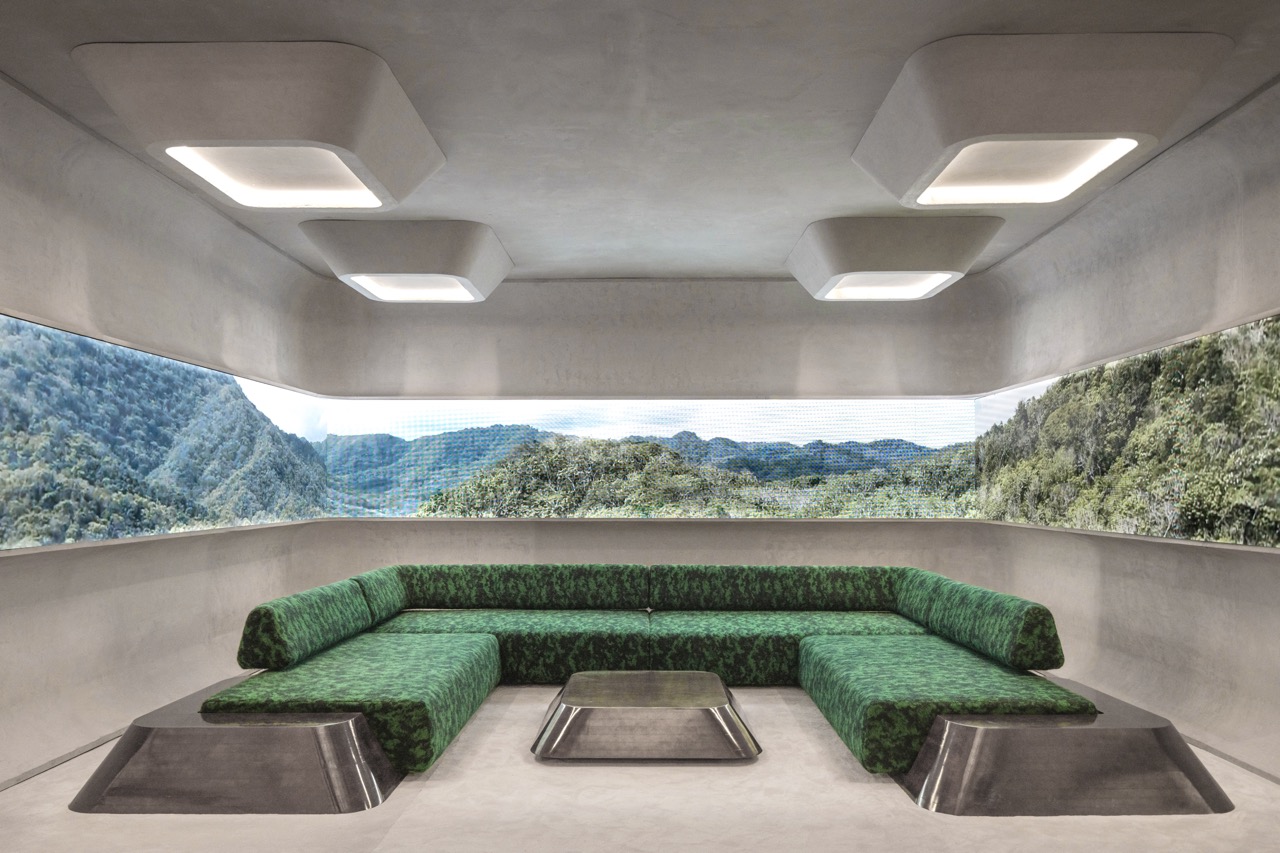“For the honest men, the beer drinkers, chainsmokers, piña coladas, good guys, tall guys, all guys, the 5’9”’s and the 9 to 5’s … All are welcome,” writes fashion designer and London College of Fashion graduate Joe Standish in his online bio. His Honest Man line isn’t just a collection of garments, well-designed and executed with recycled and repurposed elements; it reflects an ethos and a desire to replace the fast-fashion template with something more playful. Each piece comprises reworked denim—shredded or otherwise distressed—awash with vibrant oranges and whites, marking his work as distinctive, high-spirited, and DIY-infused. While creating clothes—and even characters—that feel more authentic than many of those by his contemporaries, Standish has also developed a career on an above-commercial level.
Last year, Liberty London challenged three London College of Fashion and University of the Arts London graduates—Joe, Daniel Pascal Tanner and Fotini Handra—to create contemporary pieces from Liberty London Fabrics’ SS18 Alpine Symphony collection. With behind-the-scenes access to the Liberty design studio, the graduates were shown the process behind each collection before selecting their fabrics and prints. Within three weeks, the designs were created. “I really wanted to challenge myself and see if I could work with colors that I’m not familiar with, and to see if I would have the eye that some of the designers do to match up print,” Joe told Liberty London. The outcome—a bold, floral, mountaineering look—is by definition unique. We caught up with Joe to discuss his process for the collection, and to see how these more blossoming designs compare to his distinctive Honest Man aesthetic.

Joe’s artfully distressed ‘Honest Man’ aesthetic goes mountaineering in his collaboration with Liberty London. Courtesy of Joe Standish.
How did the collaboration come about? What kind of brief were you given?
The collaboration was set up by both LCF’s and Liberty’s press teams, but it continued to change as we worked more closely together. The brief was open-ended, and Liberty gave us free rein to interpret their SS18 collection in our own design aesthetic.
Run us through the concept for the collection. What was the inspiration behind it?
The inspiration behind this design comes from combing Alpine Symphony’s tale of sweeping mountain vistas into Honest Man’s pre-existing narrative—combining the two worlds to create a unique mountaineering story.

Joe’s collaboration with Liberty London offers a dizzying take on Alpine Symphony’s mountain vistas and flowery patterns. Courtesy of Joe Standish.
Are florals something you would have chosen to experiment with if it weren’t for the collaboration? Or did it push you to work outside your comfort zone?
All my previous work focuses on distressed vintage pieces, so it was really exciting to push my own design process, working with new materials and pattern pieces. I really enjoyed combining my loose, destructive, unfinished designs and having to reimagine them in these very traditional, lightweight materials.
Run us through the design process. How did you get from the initial concept to the final composition of the collection?
I usually start with illustrations and research imagery—first focusing on telling a story and building a character, rather than the clothes themselves. Once I have a good idea of who I am designing, I start to play around with silhouettes—layering up recycled clothes, attaching props, designing the mask.
The result is Doug, a 48 year-old experienced mountaineer born in the Midlands who takes on some of the toughest peaks the world has to offer. As a seasoned climber, he enjoys nature at its purest, as well as steak and kidney pies.

Joe’s ‘The Honest Man’. Courtesy of Joe Standish.
What does a usual day in the studio look like for Joe Standish? Do you have any particular methods that spark creativity?
I really enjoy drawing, so I usually start with some small illustrations or work on the props the characters carry around. It’s usually these pieces that I don’t plan out or measure, so it’s the most unrestricted part of my collections and the easiest to pick up and start playing with.
If you are creating and enjoy what you’re doing, authenticity and passion can go a long way.
How do you think this collection relates to your previous work? There are obvious references and a continued use of the “honest man” character. Is it an extension?
I like to think of it as building a world with all the pieces co-existing in the same universe, with each collection showing a different side. I think it helps give the brand more familiarity and allows for a wider audience to relate with what I am designing. Not everyone is a fan of high fashion, but they might know someone with a dodgy tattoo.

Joe Standish’s ‘The Honest Man’. Courtesy of Joe Standish.
Are you happy with the outcome of the Liberty collaboration, or do you wish you had done anything differently?
I am really happy with the result, and Liberty was really open to the collaboration developing alongside our designs. I think it would have been interesting to see how the pieces could have been transformed for a more consumer audience, but working with Liberty fabrics was a really great honor.
What are your thoughts on accessibility in the fashion industry? Do you think it’s doing enough to nurture young and emerging talent?
I think the fashion industry has a lot of opportunity for emerging designers, but I understand that it can’t support us all. There’s now more choice with how you market yourself, where you sell, the collaborations you take on—but I don’t think every brand needs to follow seasonal patterns. If you are creating and enjoy what you’re doing, authenticity and passion can go a long way.
- Courtesy of Joe Standish.
- Courtesy of Joe Standish.

‘The Honest Man’. Courtesy of Joe Standish.





